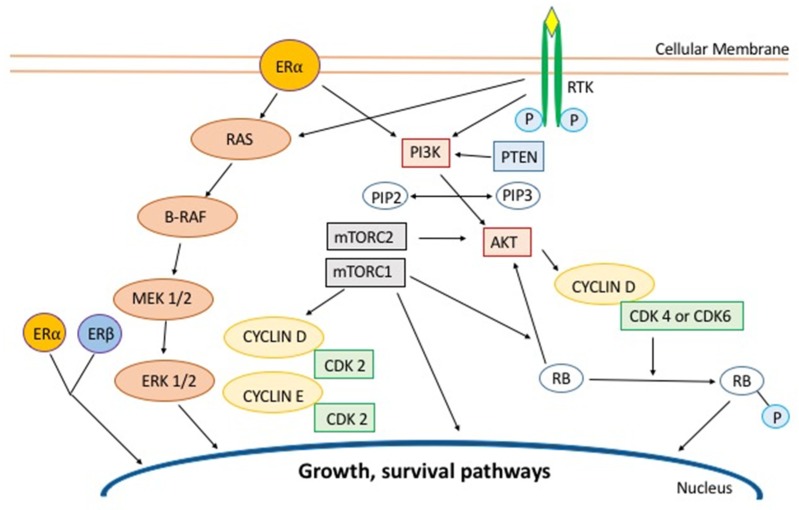Figure 1.
Intracellular growth factors and signals involved in breast cancer cell replication: Several proteins, transcription factors, and soluble mediators have roles in the cascade of events that finally leads to cell replication, as described in each section of this review. The same mechanisms are involved in endocrine resistance. The estrogen receptor (ER)α and ERβ receptors contain two transactivation domains (activation function 1, AF1, and activation function 2, AF2). Upon binding of estradiol (E2) to ER, a series of successive triggers results in the translocation of chaperone proteins from the ERα, receptor dimerization, phosphorylation, and the subsequent binding of ER to the DNA. While AF2 serves as a binder for coactivators and corepressors, AF1 is not dependent on a ligand and its activation is mediated by crosslinks and crosstalk among the RAS/B-RAF, phosphatidylinositol 3-kinase (PI3K)/protein kinase B (AKT), and cyclin-dependent kinase (CDK)2 pathways. Moreover, activation of the growth factor receptor tyrosine kinases leads to the phosphorylation of the ER through the RAS/B-RAF and PI3K/AKT pathways. The CDKs are cyclin D -dependent drivers in the cell cycle and division. During the DNA synthesis phase of the cell cycle, the cyclin D-CDK4/6 complex serves as the enzyme that catalyzes the phosphorylation of the retinoblastoma (RB) protein and dictates DNA replication [5,6,11,14]. mTOR: mammalian target of rapamycin.

